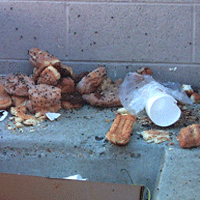
CLOSED DUE TO INADEQUATE PEST CONTROL! These words invoke fear, embarrassment, and guilt not just in the Food Service Industry, but also in the Pest Management provider. Restaurants, retail stores, hotels, and other businesses involved with food service are under constant scrutiny by Public Health Inspectors to ensure that their premises are well managed and free of pest infestation. Public Health Inspectors play an important role in making sure the public is protected from disease and food borne pathogens, something that rodents, birds and insects can readily spread. It is the responsibility of the Food Service Industry and Pest Management Professionals (PMPs) to work together in providing safe food premises thus ensuring pubic health.
Typically closures of a food premise are triggered when:
What the Food Service Industry can do to prevent Public Health inspection closure:
As we have seen, pest management programs must be proactive in nature to achieve the desired result of protecting the establishment from pest activity. This goal can only be achieved with a partnership that provides a focussed approach to strong sanitation practices, sound building maintenance and quick detection with appropriate action toward pest presence should it occur. By working together in this nature, risk to public health is avoided and brand image is not only maintained but is strengthened.